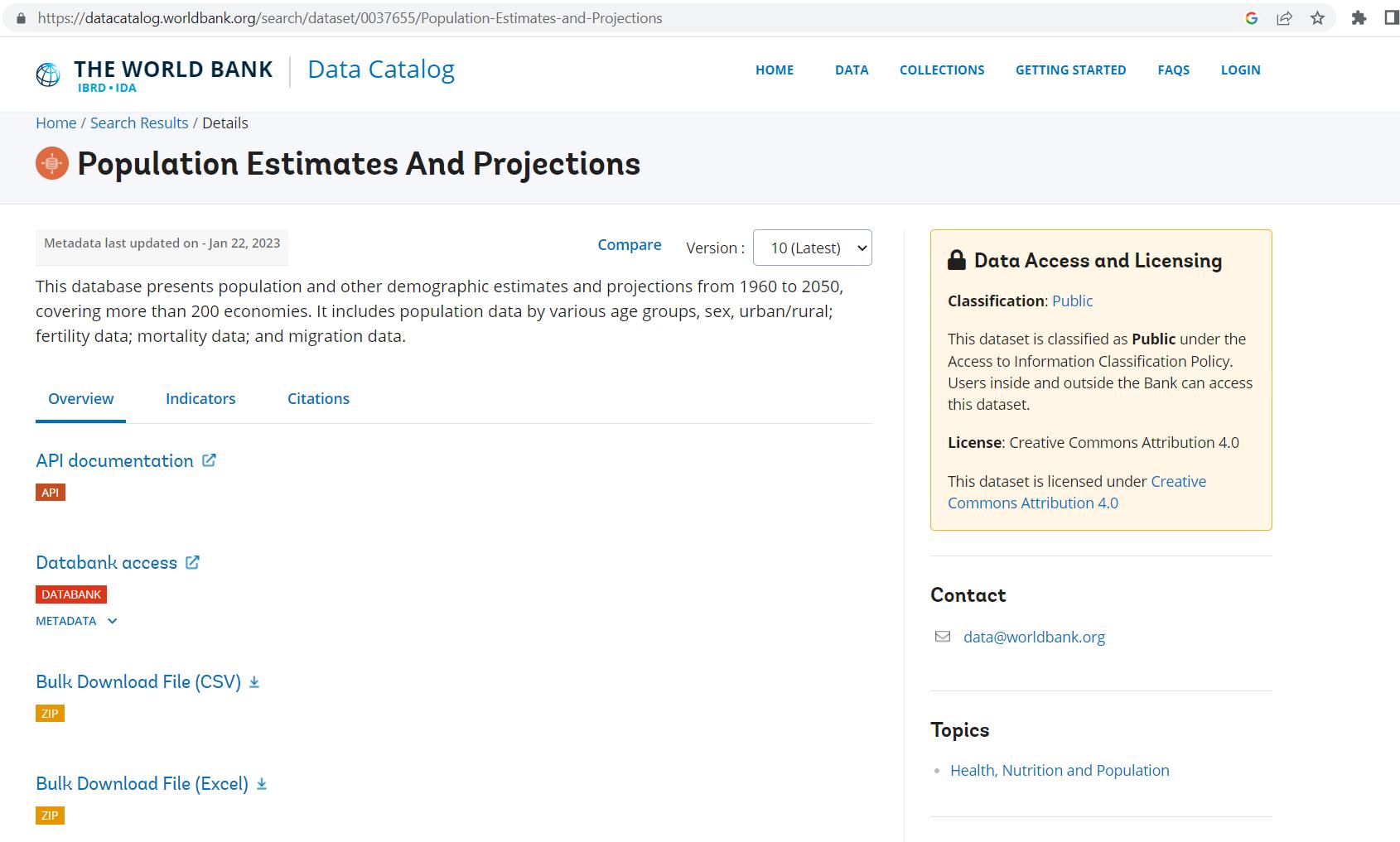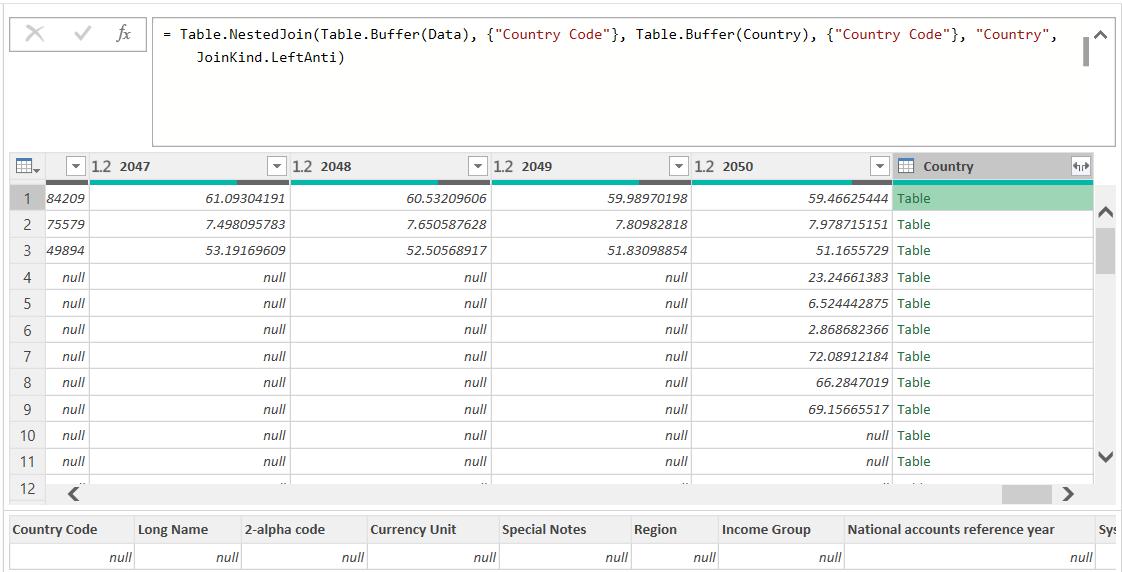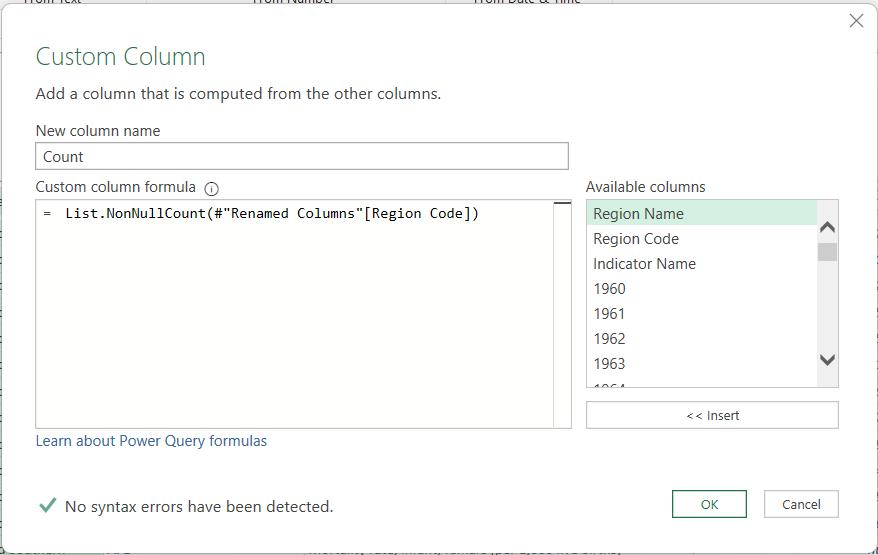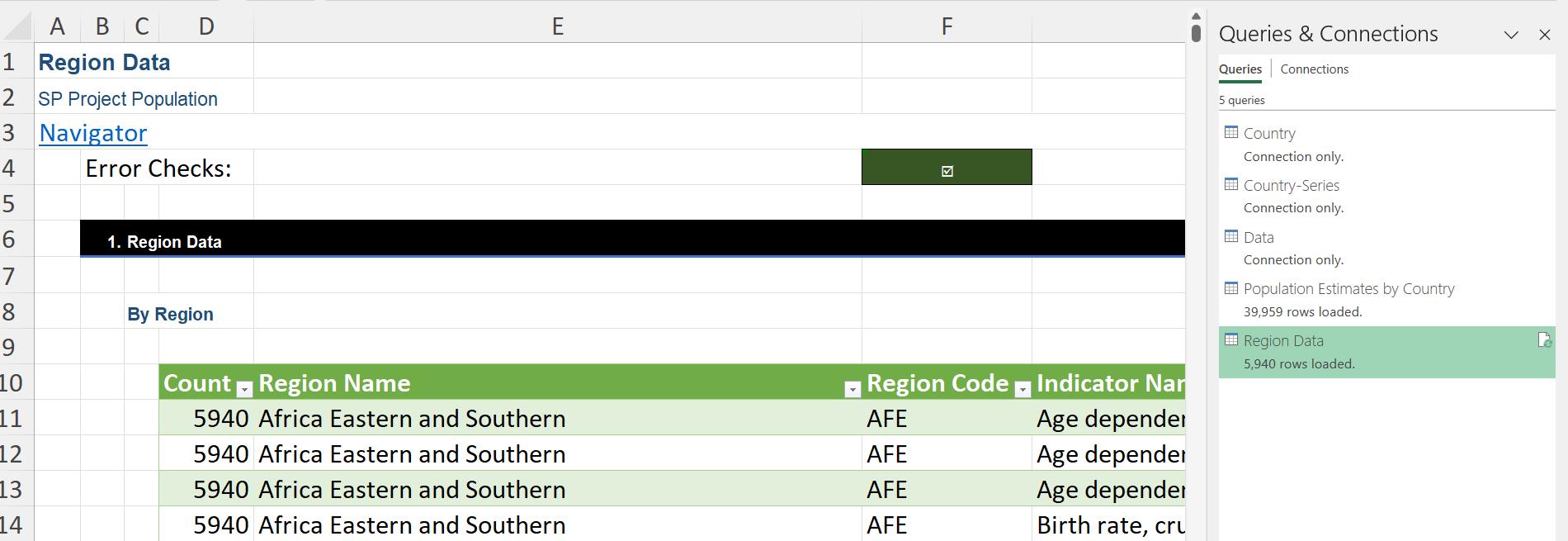Power Query: Project Population – Part 14
26 July 2023
Welcome to our Power Query blog. This week, I complete the Project Population series.
I have found some information on population growth provided by The World Bank, which I am using as an example of how to transform real-life data.

I have been transforming the data, and last week, I created a query by merging Country and Data, using Left Anti join, to get the rows from Data which don’t match a Country Code on Country(or, by extension, Population Estimates by Country).

This time, I will tidy up this query. The first thing I shall do is to make the existing Source step more efficient. The M code is currently:
= Table.NestedJoin(Data, {"Country Code"}, Country,
{"Country Code"}, "Country", JoinKind.LeftAnti)
In this case, I definitely do not want to change this to use Table.Join(),since I don’t need any columns from Country. I do however want to use Table.Buffer() to speed up the merge:
= Table.NestedJoin(Table.Buffer(Data), {"Country Code"},
Table.Buffer(Country), {"Country Code"}, "Country",
JoinKind.LeftAnti)
As usual, this has no impact on the appearance of my query:

Since merging always follows the same process, even though I have used a ‘Left Anti’ join to find those Country Code values on Data that did not have a match in Country, I still have a column where I could extract the Country columns:

Unsurprisingly, if I click on the space next to one of the ‘Table’ values, there is not much to see:

Therefore, I delete the Country column by selecting it and pressing the Delete key.

Since I know that the Country Code column in this query is representing more than just one country, I change the column name to Region Code. Similarly, I rename Country Name to Region Name. I also rename the query Region Data:

I could wait until I upload the query to see how many rows are uploaded, but there is another way. I select the Region Code column, and on the Transform tab, I choose ‘Count Values’.

This will tell me how many rows in this column have values other than blank or null.

My answer is 5,940 rows. Note that this uses List.NonNullCount(), so if I wanted to include this data in my query, I could put this M code into a ‘Custom Column’ using the option on the ‘Add Column’ tab:

The number of rows is now shown with my data and I move it to the beginning of the query by right-clicking on the Count column and choosing ‘Move to Beginning’:

Finally, I will load the queries I have created into Excel (having changed the data type of Count to a Whole Number). I choose ‘Close & Load’, and right-click on the query I wish to load to the current sheet. This presents me with the ‘Import Data’ dialog, where I choose to load to Table, and select a cell on the existing worksheet:

I can repeat this process for the Region Data query:

I’ve proved that the count is correct!
Come back next time for more ways to use Power Query!

